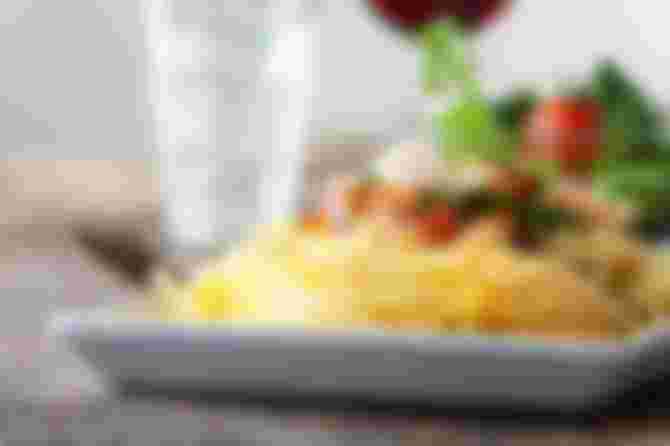Spaghetti carbonara is an Italian pasta dish and is considered almost unavoidable in Roman cuisine. It is prepared in a simple way, it is very nutritious and quite strong in taste.
Long noodles are used to prepare carbonara - spaghetti or tagliatelle, or fettuccine. It is interesting that the Romans made this dish with short noodles, such as rigatoni.
Some culinary historians consider carbonara to be a Roman invention, while others associate it with the Umbrian region, ie they say that it was a favorite dish of Umbrian miners (carbon = coal).
Others are convinced that the recipe was devised by Ipolito Cavalcanti, Duke of Buonvicino (1787-1859), a cook and writer of blue blood. Hippolytus came from a tribal family of which the famous poet Guido Cavalcanti was a member. At the beginning of the 14th century, the Cavalcanti family left Tuscany and moved to Calabria, and at the end of the 18th century, they received the title of Duke of Buonwichin.
Cavalcanti first published the book "Theoretical and Practical Culinary Arts" in Naples in 1837, and two years later an amended edition. This rich collection of culinary recipes contains explanations for the preparation of many dishes famous in the 19th century, among which the Neapolitan ragout stands out. In Cavalcanti's collection, there is a recipe very similar to the one used to prepare carbonara, although there is no official confirmation that he is the inventor of that dish.
Not far from Cagliari is the place Carbonia, so some believe that the carbonara actually originates from there, and that an unknown chef transferred his invention to Rome, naming it after his birthplace, instead of calling it by its name. In Rome, the dish quickly became a favorite, and then grew into a true gastronomic legend.
However, there is also the opinion that pasta ala carbonara was invented during the Second World War, when bacon was the only meat that could be found.
And, finally, the last assumption: the dish was named after the pepper that is sprinkled on the pasta at the end of the preparation, and which is black as coal (as we said, carbons in Italian means coal).
Since the caloric content of carbonara is high (pasta, fried bacon, cheese and eggs), it is usually served only as a main dish with a light salad. So, unless you work as a miner, this dish should not often be on your table.

And here is everything you need for this specialty and how it is prepared.
Ingredients:
200 g spaghetti
2 egg yolks
100 g dry bacon
200 ml of fresh liquid sour cream
40 g grated parmesan
50 g grated hard yellow cheese
1 teaspoon freshly ground pepper
2 cloves garlic
1 tablespoon olive oil
1 teaspoon salt
1 tablespoon chopped parsley
In some recipes for this dish, sour cream is excluded, in some, on the contrary, it is added. Experts say that in the Roman area, where the dish was made, sheep's milk cheese "pecorino romano" is used, instead of parmesan, which is made from cow's milk. They also say that the pancetta is not used, but the "guanciale" bacon, which comes from the pork background, while the pancetta is from the lower middle part.
Preparation: Put spaghetti to cook according to the instructions. It will take just that long to complete the other steps in the recipe. Wash and chop the primrose. Mix egg yolks with sour cream, salt and pepper, then add primrose. Add grated cheese and mix well, then set aside. Chop the bacon. Heat a tablespoon of oil over a medium heat, then put the bacon to fry, stirring constantly. Put garlic cloves in a piece, but first press them lightly to crack and release their aroma. When the bacon becomes glassy, remove it from the heat and drain the excess fat, and let a tablespoon or two remain. Mix hot, drained, spaghetti with hot bacon and pour the already mixed topping with egg yolks and cheese. Do not cook, just stir quickly so that the yolk does not clump. In this way, it will be thermally processed and safe to eat. The cheese will melt and give a creamy carbonate structure.
It is interesting that the feature film "La Carbonara", directed by Luigi Manji in 2000 is also dedicated to this dish.


I like them just like that, except that I make sure to add oregano and sometimes a little hot sauce.